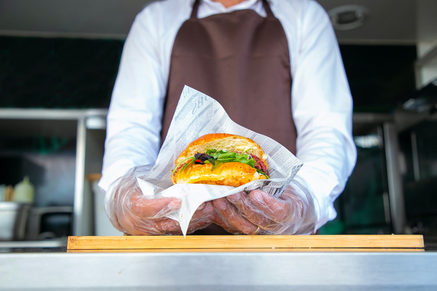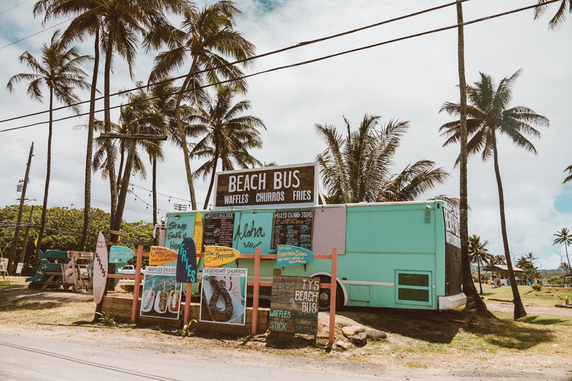|
You have years of experience in the food and beverage sector, and you’ve always dreamed of starting a food truck business - but your current area is so pricey that you’re afraid you would never be able to run a profitable venture. Moving to a state like Florida, where economic opportunities abound, and the cost of living is reasonable, might be the solution! Plus, working with an expert like Moore Better Performance can help you confidently launch your business. Here’s why Florida is a perfect launching pad for food truck entrepreneurs. Rentals in Florida Many cities, suburbs, and small towns throughout Florida offer a low cost of living. This means you’ll likely be able to support your household with your food truck income rather than having to pick up another job to cover your essential expenses. Furthermore, you won’t need to spend as much to hire qualified talent. If you’re browsing homes for sale in Florida, you’ll find a wide variety of options at affordable price points. Currently, the median home value is hovering around $378,104, while median rents in major cities across the state generally fall between $3,675 to $2,190 for a three-bedroom home. Aspiring home buyers should look into down payment assistance programs. For example, you might be eligible for a Homeownership Voucher Program, an Energy Efficient Mortgage Program, or a mortgage credit certificate. Furthermore, veterans might qualify for a VA loan. Rapid Growth Today, lots of people are moving to Florida - which means that the potential consumer base for your food truck business is expanding with each passing day. This growth shows no signs of stopping, either! Foodie Destination Florida is a diverse state that attracts lots of tourists and retirees - in other words, lots of Floridians are looking to relax, check out local attractions, and enjoy a good bite to eat during their downtime! With so many people coming to Florida for leisure, food trucks can definitely meet these demands. University-Educated Workforce Food truck operators need employees with varied skill sets, from cooks with culinary talents to cashiers with customer service expertise to marketing specialists who understand the food and beverage industry. Career Karma states that you’ll find countless qualified professionals with degrees from these great Florida universities:
Vibrant Culture and Natural Beauty Florida is a beautiful state - and with a high quality of life and plenty to do, it’s easy to see why this region boasts a happy, enthusiastic workforce! Make sure to visit these gorgeous local parks and attend these exciting cultural events:
State-Wide Support for Entrepreneurs Entrepreneurship can be a lonely path. Connecting with business organizations can help you befriend local leaders and mentors, find loyal new customers, and overcome challenges. Here are several organizations that support entrepreneurs in Florida:
Key Business Launch Tasks Before opening your business, you may want to register it as an LLC to gain tax breaks and protect your financial assets. Make sure to look up Florida’s LLC regulations so that you can gather the required documents. Furthermore, don’t forget to include these tasks on your to-do list:
It’s not surprising that so many people are drawn to Florida. By seeking out down payment assistance, you can buy your dream home here while building up your food truck business. If you’re ready to open your very own food truck, there’s no better place than Florida! Interested in taking your food truck business up a notch? Turn to Moore Better Performance for coaching! Visit our website today to schedule a consultation. Photo via Pexels Guest Author-Tina Martin - [email protected]
1 Comment
When you’re running a food truck, many of your customers are likely to be cultivated in person, but if you want to grow your brand beyond the food court, it’s essential to carry out some marketing basics. In this article, we’ll explore a few simple strategies and help you to become your own marketing department.
Understanding Marketing Before you launch a campaign or deploy new technology, it’s important to get to grips with the simple tenants of marketing and how these may apply to your food truck business.
Delivering Marketing Trying to strategize how to actually implement your marketing campaigns can be tricky. You’ll have to consider budget, reach, audience controls, market factors, and more.
Refining Marketing After you’ve launched your campaign, there’s still lots of work to do tracking/analyzing results and making refinements to your approach.
When you’re running a food truck, marketing can often seem irrelevant to business, but whether you’re leveraging social media, downloading the latest tracking tools or even returning to education to brush up on your skills, it’s important to think about how you can go about sharpening your expertise and promoting your business. At Moore Better Performance, our mission is to develop a strong moral, legal and ethical foundation in all aspects of food service for ourselves and our clients. Our goal is to provide accurate information paired with detailed training and motivational coaching to enable our clients to soar above their competition. Learn more at: www.moorebetterperformance.com Image by Pexels  Image via Pexels Image via Pexels For entrepreneurs with a passion for food, nothing could be more fulfilling than opening a restaurant. The culinary arts serve an incredible role in connecting people and sharing culture, not to mention turning a healthy profit for keen business owners. Opening a restaurant requires a huge amount of startup capital and upkeep, though, so new entrepreneurs should consider starting on a smaller scale. Starting a food truck is a much more accessible option, and it is no less meaningful than owning a brick-and-mortar establishment. Learn How To Start a Food Truck Launching and operating a food truck requires much of the same knowledge as opening a restaurant, with some unique provisions of its own to learn about as well. It would be well worth your time to undergo dedicated food truck training with the help of an experienced mentor. You will need to become familiar with food safety requirements as well as industry standards regarding service, menu design, and other important considerations. Your early preparations should also consist of learning general business management practices. Writing a business plan, setting up payment processing systems, and creating a workflow strategy are all things you must do before welcoming your first customer. Remember That Food Trucks Are Full-Fledged Businesses While a food truck is certainly a smaller entity than a typical restaurant, you should understand that it is an official business all the same. This means that you bear similar tax obligations to other business owners and should therefore practice good accounting habits. You can use free accounting software solutions to help you manage finances and payroll. One way to improve the tax situation for your food truck is to register your business under the appropriate structure for your circumstances. Registering as an LLC, for example, has distinct tab advantages as well as liability protections. If you decide to file for LLC status, consider using a formation service to avoid costly lawyer fees. Know Your Funding Options Starting up a food truck is an affordable option for food service entrepreneurs, but that doesn't mean you can be lax when it comes to budget and funding. Be sure to research any small business grants or loans you may qualify for. Take any debts you have into consideration when making financial projections for your first year of operation. Once you have an idea of your profit goals and expected spending, you can make your budget work to its fullest capacity. Use Affordable Marketing Methods Business experts explain that digital marketing is important for small businesses as it allows you to reach a larger audience than traditional methods. This is particularly true for food truck owners, who may be overlooked in favor of restaurants that offer a typical dining experience. Digital marketing is also appealingly affordable to small business owners on a budget. Social media is an especially powerful marketing tool that enables you to engage with potential customers through eye-catching advertising. Using a Facebook ads maker allows you to customize premade templates with your brand logo, various colors, and fonts of your choosing. You can then download the ad to use as you see fit on your social page. Starting a food truck is a great way to get your start in the food industry. You will save a great deal of money on real estate as well as on advertising when you use social media solutions. By keeping your business knowledge and passion for cuisine at the forefront of your mind, you can build a business that will only grow with time. Guest AuthorTina Martin - [email protected]
Starting a small business is a great way to readjust to civilian life after leaving the military. Beyond this, becoming an entrepreneur will help you take control of your earning power and use all those valuable skills you picked up in the military while continuing to serve your community in a new way. However, acquiring the knowledge and investment capital to get started can be a challenge. Between government funding programs and business coaching services like Moore Better Performance, you have several avenues for accessing support and guidance! Keep It Legal First and foremost, make sure to check all of the boxes when it comes to launching your business legally. You may need certain permits and licenses to operate a business, even if you plan on working from home. Start by registering your business with your state so you can apply for loans, hire employees, and develop professional relationships with suppliers. ZenBusiness breaks down your options for structuring your business, including forming an LLC, so you can learn what’s involved. Compared to an S corporation, an LLC allows for more flexibility and comes with less paperwork, so it’s a popular option for small business owners! Take Advantage of Free Programs While it can be tempting to rush into an exciting business project, it’s important to learn everything you need to know before getting started — including key tech skills! As a veteran, you have access to all kinds of free training programs that can help you acquire the skills you need. Forbes recommends programs like Boots to Business, Reboot, Patriot Boot Camp, and VETRN. Programs also exist to help veterans who are interested in owning a franchise access education and support. The Small Business Administration also offers a program through the Veterans Business Outreach Center to provide business training and counseling to veterans. Start Small Launching and running a business is a lot more complicated than you may think! If you’re a first-time entrepreneur, start small with a simple business idea. Of course, you also need to think about startup costs. Stick with business ideas that will fit your budget so you can see them through to launch. There's nothing worse than pouring your sweat and blood into a business and running out of money before you get a chance to attract paying customers! Starting a food truck business could be a fantastic introduction to entrepreneurship. Compared to opening a brick-and-mortar restaurant, food trucks come with low overhead costs and are a great way to break into the food industry. Looking for something even cheaper? There are also plenty of low-cost businesses you can run from your home! Access Funding Assistance Collecting startup capital is one of the hardest parts of launching a business. To reduce the strain on your savings, take advantage of all the funding programs that are available to you! Start by looking for federal, state, and regional grants that are curated specifically for veterans. The Balance Small Business suggests seeking financing at your local VBOC. You can also use online resources like GrantWatch to find grants specifically for nonprofits that benefit veterans. Special financing programs also exist for veterans who want to buy a franchise. These programs exist for a reason, so make sure you take advantage of them! If you’re interested in starting a business, the path can feel a little overwhelming. Don’t let this hold you back from pursuing entrepreneurship! As a veteran, you possess several valuable skills that will set you up to succeed as a small business owner. Are you interested in launching a food truck business? Navigating the logistics of getting your business up and running can be challenging, but Moore Better Performance will provide the guidance you need. Check out our training and coaching services today! Guest AuthorKelli Brewer from deploycare.org  A hobby is defined as a regular activity done for enjoyment, typically during one's leisure time, not professionally and not for pay. Sound familiar? Most people vend in their "off time" from other careers and claim not to make money. Hmmm, amateurs don't get paid, but professionals do. Typically, a hobbyist pours money into their favorite past time. Getting the picture? Trying to decide which you are? Hobbyist or businessperson? Just for fun read the rest in the voice of Jeff Foxworthy. IF you only work your vending business around your other higher paying career... you might be a hobbyist.
IF you don't pay yourself regularly... you might be a hobbyist. IF you don't know ALL your expenses down to the penny... you might be a hobbyist. IF you close whenever you feel like it... you might be a hobbyist. IF you don’t have written recipes and assembly standards… you might be a hobbyist. IF you first turn to anonymous people for regulatory, legal, or tax advice and not your local experts... you might be a hobbyist. IF you don't have a budget for every possible business expense... you might be a hobbyist. IF you don't take a regular inventory... you might be a hobbyist. IF you don't figure a P&L statement regularly... you might be a hobbyist. IF you don't use a POS system to track sales and inventory... you might be a hobbyist. IF you regularly put personal money into your business to keep it afloat... you might be a hobbyist. IF you avoid events because the "the fees are too high"... you might be a hobbyist. IF your first move in food vending is to buy equipment before learning the industry... you might be a hobbyist. IF you think all you need is a good recipe to get more sales... you might be a hobbyist. IF your menu has more than 4 main categories of food... you might be a hobbyist. IF your business can't survive two weeks of bad weather... you might be a hobbyist. IF your excuse for slow service is "we cook to order"... you might be a hobbyist. IF you don't ask every guest for feedback and reviews... you might be a hobbyist. IF you have told more than one guest to "go to McDonald's"... you might be a hobbyist. IF you have covered burnt food with more cheese and sent it out... you might be a hobbyist. IF you reduce your condiment portions towards the end of the day so you don't run out... you might be a hobbyist. IF you continue to take orders while your cooking staff is "in the weeds"... you might be a hobbyist. IF your average wait time more than doubles your average cook time... you might be a hobbyist. IF you don't know your average wait time... you might be a hobbyist. IF you think a line 40 people deep for hours on end is a good thing... you might be a hobbyist. IF you have a staff and don't "inspect what you expect"... you might be a hobbyist. IF you don't have a daily record of temperatures for equipment and food... you might be a hobbyist. IF you think liability insurance is all the insurance you need... you might be a hobbyist. IF you don't buy necessary safety equipment because it is "too expensive"... you might be a hobbyist. IF you choose price over quality... you might be a hobbyist. IF you believe "3 times cost" yields enough profit after all the other expenses... you might be a hobbyist. IF you just lump expenses together and call it "overhead"... you might be a hobbyist. IF you use "retail" terms rather than "restaurant" terms... you might be a hobbyist. IF you think paying your workers as contract labor (1099) is legal... you might be a hobbyist. IF you haven't paid yourself back all the business startup money... you might be a hobbyist. IF you think just opening up with no marketing plan will bring hungry people... you might be a hobbyist. IF you think you have customers and not guests... you might be a hobbyist. IF you don't know your exact breakeven point for the day, week, month and year... you might be a hobbyist. IF you don't know how many guests it takes to achieve your daily sales goal... you might be a hobbyist. IF you don't have a daily sales goal that covers that day's expenses... you might be a hobbyist. IF you think coins slow your speed of service... you might be a hobbyist. IF you only claim credit card sales and NOT cash sales for taxes... you might be a hobbyist. IF you say "no" to events, locations, catering, private gigs, without doing the math... you might be a hobbyist. IF you have zero cash in reserve, generated by your business for your business... you might be a hobbyist. IF you are not food manager certified and your staff not food handler certified... you might be a hobbyist. IF you started your food truck WITHOUT restaurant experience... you might be a hobbyist. IF you hire people and don't train them... you might be a hobbyist. IF you say "cash is king" and refuse accepting credit cards... you might be a hobbyist. IF you are charging service fees on credit cards... you might be a hobbyist. IF you don't have a loyalty program... you might be a hobbyist. IF you run a "cash discount" program... you might be a hobbyist. IF you think food cost is the same as the total money spent on buying inventory... you might be a hobbyist. IF your business is not where you want it to be and you don't seek experienced professional guidance... you do definitely have a hobby. |
Bill MI have had a passion for helping people since an early age back in rural Kentucky. That passion grew into teaching and training managers and owners how to grow sales, increase profits, and retain guests. You’ll find a ton of information here about improving restaurant and food cart/trailer operations and profits. Got questions? Email me at [email protected] Archives
January 2023
|



 RSS Feed
RSS Feed